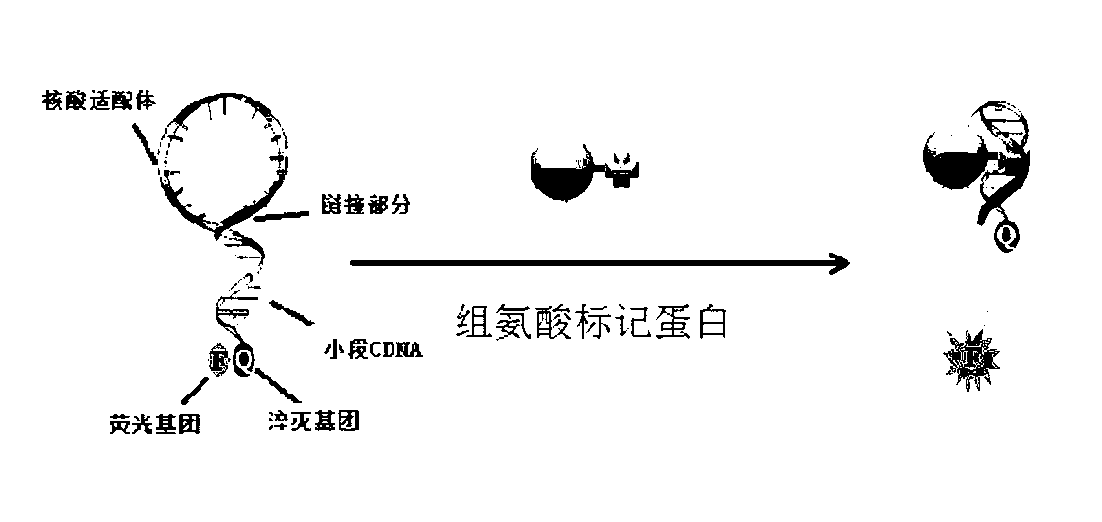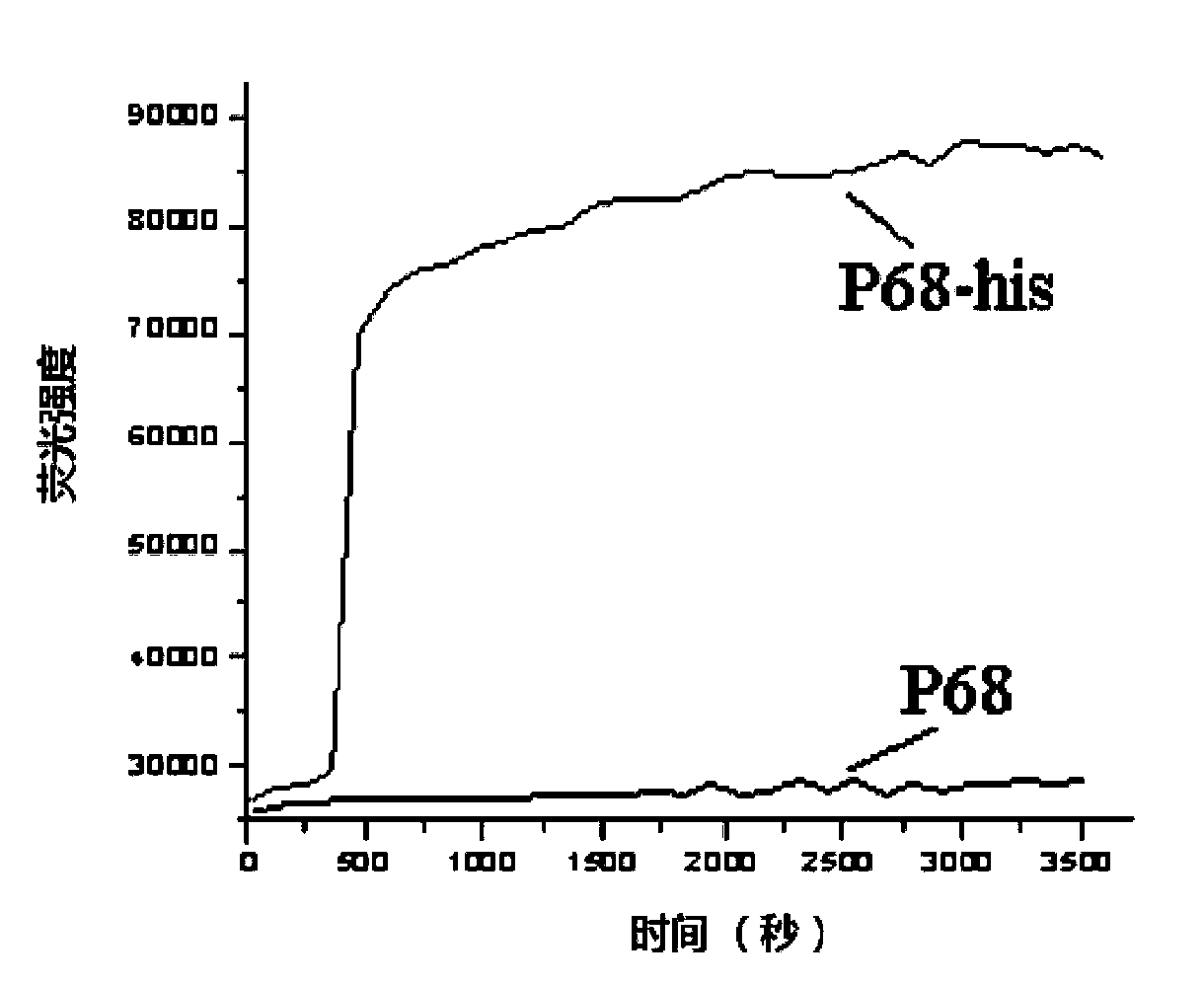Nucleic acid aptamer molecular beacon probe for detecting histidine-tag recombinant proteins and detection method thereof
A molecular beacon probe and nucleic acid aptamer technology, applied in the biological field, can solve the problems of expensive preparation of histidine-labeled antibody antibodies, long detection time, and time-consuming, and achieve rapid detection and quantitative analysis, good affinity Ability, easy to prepare effects
- Summary
- Abstract
- Description
- Claims
- Application Information
AI Technical Summary
Problems solved by technology
Method used
Image
Examples
Embodiment example 1
[0034] Implementation Case 1: Preparation of Nucleic Aptamer Molecular Beacon Probes
[0035] a kind of like figure 1 The shown nucleic acid aptamer molecular beacon probe of the present invention for detecting histidine tags, the probe includes a nucleic acid aptamer molecular beacon probe and a fluorescent group and a quencher group connected to the 5-terminal and 3-terminal respectively . Nucleic acid aptamer molecular beacon probe includes a histidine tag recognition sequence (5’- CAGGTTG GTCTGGTTGGGTTTGGCTCCTGTGTACG 3'), a nucleic acid fragment cDNA connected to the 3-terminus and partially complementary to the nucleic acid aptamer ( CAACCTG)And the bridge molecule PEG36 connecting two nucleic acid fragments. The ability of double-strand complementary hybridization in the nucleic acid aptamer molecular beacon probe is weaker than the ability of the nucleic acid aptamer to bind to the histidine tag. In this implementation case, the nucleic acid aptamer molecular ...
Embodiment 2
[0036] Example 2: Kinetic response of nucleic acid aptamer molecular beacon probes to histidine-tagged proteins
[0037] A nanomolar amount of the substance was dissolved in microliters of binding buffer solution to a final concentration of 25 nanomolar. Two tubes of 200 microliters of the solution were heated at 95°C for 10 minutes, and then slowly cooled to room temperature. Add histidine-tagged P78 recombinant protein or P78 protein to make the final protein concentration 300 nmol. At the same time, the fluorescence change of the nucleic acid aptamer molecular probe was recorded by a Fluorolog spectrophotometer (Jobin Yvon Horiba). Experimental results such as figure 2 As shown, after adding the histidine-tagged P78 protein with a final concentration of 300 nanomolar for 400 seconds, the fluorescence of the nucleic acid aptamer molecular beacon probe increased sharply and continued to increase with time; while the final concentration of 300 nanomolar The P78 protein w...
Embodiment 3
[0038] Example 3: Specific recognition of various histidine-tagged proteins by nucleic acid aptamer molecular beacon probes
[0039] A nanomolar amount of the substance was dissolved in microliters of binding buffer solution to a final concentration of 25 nanomolar. Take 200 microliters of the solution and heat it at 95°C for 10 minutes, then slowly cool to room temperature. The fluorescence intensity of the nucleic acid aptamer molecular beacon probe was recorded by a Fluorolog spectrophotometer (Jobin Yvon Horiba) at room temperature. Add P68 recombinant protein containing histidine tag (final concentration: 200 nmol), P78 recombinant protein containing histidine tag (final concentration: 200 nmol) and containing Histidine-tagged GSTZ recombinant protein (final concentration: 200 nanomolar), histidine-tagged polypeptide (final concentration: 10 micromolar), P68 protein (final concentration: 200 nanomolar), P78 protein (final concentration: 200 nanomolar) molar), bovine s...
PUM
 Login to View More
Login to View More Abstract
Description
Claims
Application Information
 Login to View More
Login to View More - R&D
- Intellectual Property
- Life Sciences
- Materials
- Tech Scout
- Unparalleled Data Quality
- Higher Quality Content
- 60% Fewer Hallucinations
Browse by: Latest US Patents, China's latest patents, Technical Efficacy Thesaurus, Application Domain, Technology Topic, Popular Technical Reports.
© 2025 PatSnap. All rights reserved.Legal|Privacy policy|Modern Slavery Act Transparency Statement|Sitemap|About US| Contact US: help@patsnap.com



